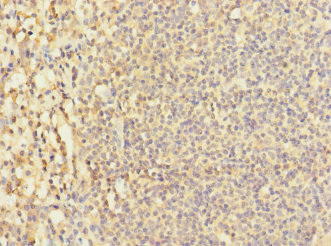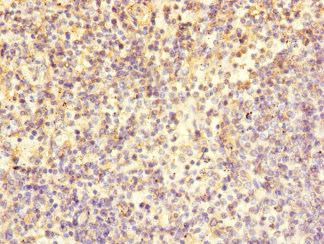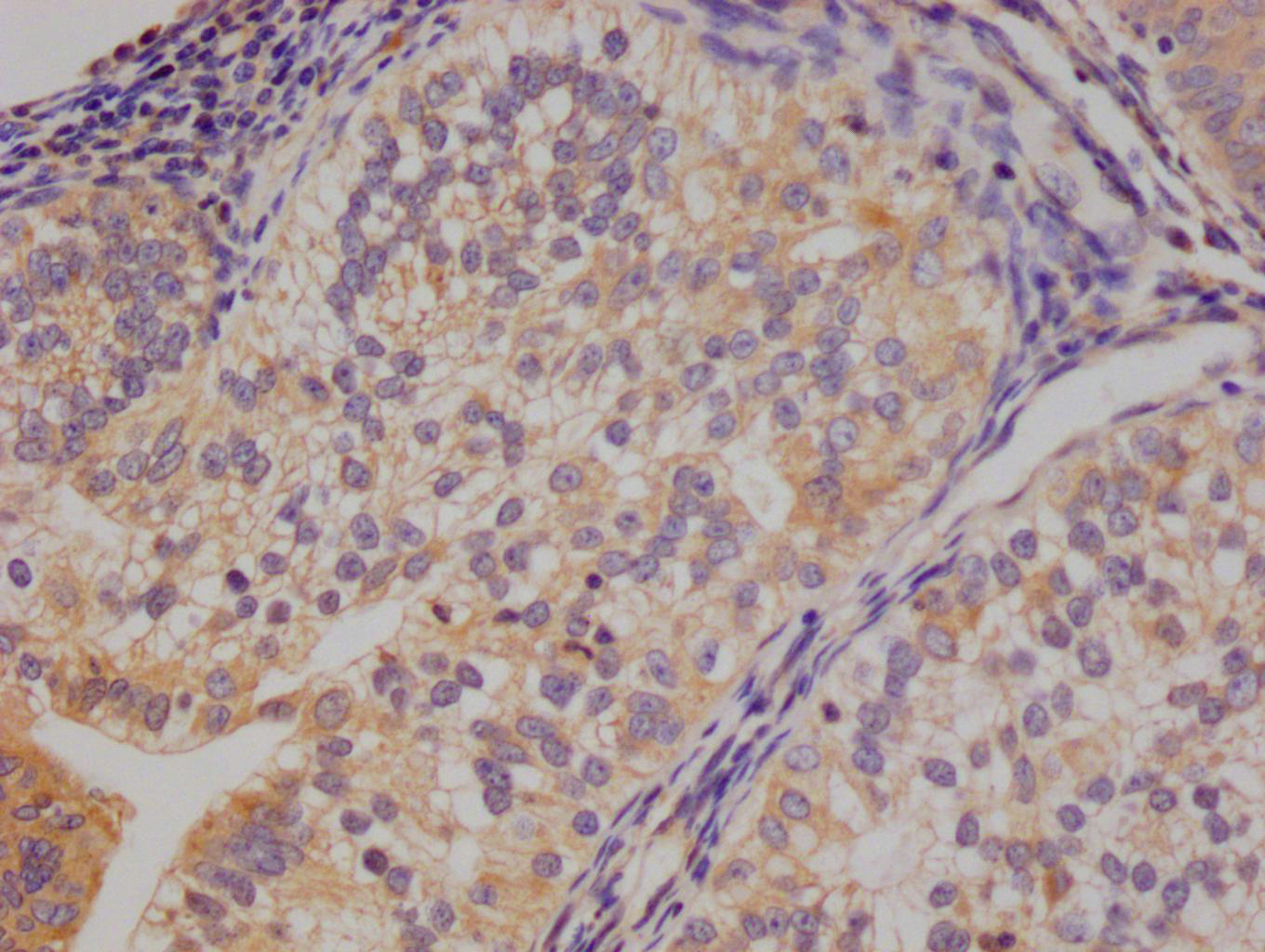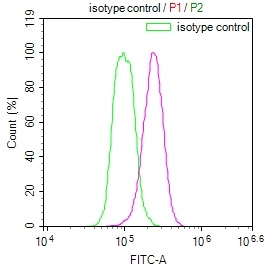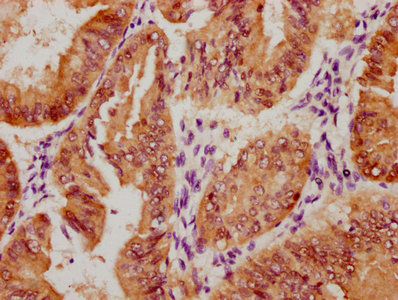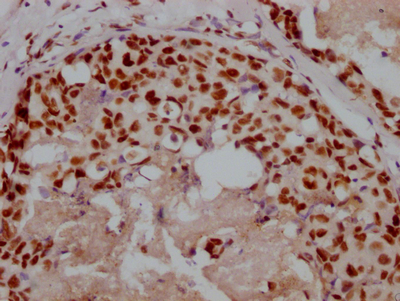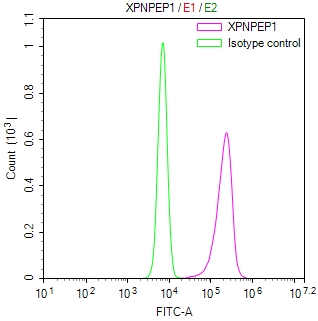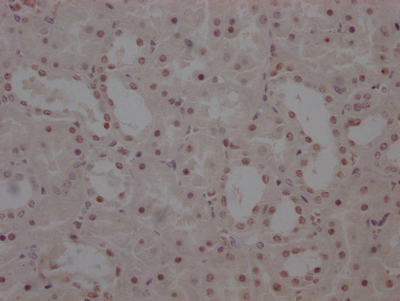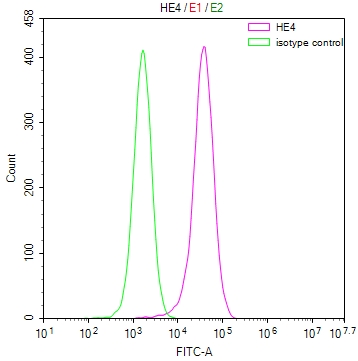LY9 Antibody
-
中文名稱:LY9兔多克隆抗體
-
貨號:CSB-PA884511ESR2HU
-
規(guī)格:¥440
-
圖片:
-
其他:
產(chǎn)品詳情
-
產(chǎn)品名稱:Rabbit anti-Homo sapiens (Human) LY9 Polyclonal antibody
-
Uniprot No.:
-
基因名:
-
別名:CD229 antibody; Cell surface molecule Ly-9 antibody; Cell surface molecule Ly9 antibody; hly9 antibody; LY 9 antibody; Ly9 antibody; LY9_HUMAN antibody; Lymphocyte antigen 9 antibody; mLY9 antibody; Signaling lymphocytic activation molecule 3 antibody; SLAM family member 3 antibody; SLAMF3 antibody; T lymphocyte surface antigen Ly9 precursor antibody; T-lymphocyte surface antigen Ly-9 antibody
-
宿主:Rabbit
-
反應(yīng)種屬:Human
-
免疫原:Recombinant Human T-lymphocyte surface antigen Ly-9 protein (160-360AA)
-
免疫原種屬:Homo sapiens (Human)
-
標(biāo)記方式:Non-conjugated
-
克隆類型:Polyclonal
-
抗體亞型:IgG
-
純化方式:Antigen Affinity Purified
-
濃度:It differs from different batches. Please contact us to confirm it.
-
保存緩沖液:PBS with 0.02% sodium azide, 50% glycerol, pH7.3.
-
產(chǎn)品提供形式:Liquid
-
應(yīng)用范圍:ELISA, IHC
-
推薦稀釋比:
Application Recommended Dilution IHC 1:20-1:200 -
Protocols:
-
儲存條件:Upon receipt, store at -20°C or -80°C. Avoid repeated freeze.
-
貨期:Basically, we can dispatch the products out in 1-3 working days after receiving your orders. Delivery time maybe differs from different purchasing way or location, please kindly consult your local distributors for specific delivery time.
-
用途:For Research Use Only. Not for use in diagnostic or therapeutic procedures.
相關(guān)產(chǎn)品
靶點詳情
-
功能:Self-ligand receptor of the signaling lymphocytic activation molecule (SLAM) family. SLAM receptors triggered by homo- or heterotypic cell-cell interactions are modulating the activation and differentiation of a wide variety of immune cells and thus are involved in the regulation and interconnection of both innate and adaptive immune response. Activities are controlled by presence or absence of small cytoplasmic adapter proteins, SH2D1A/SAP and/or SH2D1B/EAT-2. May participate in adhesion reactions between T lymphocytes and accessory cells by homophilic interaction. Promotes T-cell differentiation into a helper T-cell Th17 phenotype leading to increased IL-17 secretion; the costimulatory activity requires SH2D1A. Promotes recruitment of RORC to the IL-17 promoter. May be involved in the maintenance of peripheral cell tolerance by serving as a negative regulator of the immune response. May disable autoantibody responses and inhibit IFN-gamma secretion by CD4(+) T-cells. May negatively regulate the size of thymic innate CD8(+) T-cells and the development of invariant natural killer T (iNKT) cells.
-
基因功能參考文獻:
- Authors make a strong correlation between induced SLAMF3 overexpression and the specific loss of MRP-1 expression and its functionalities as a drugs resistance transporter. PMID: 27081035
- the results presented here suggest that the tumor suppressor potential of SLAMF3 occurs through activation of Retinoblastoma protein that represses PLK1. PMID: 26799423
- study showed CD229 is overexpressed on the malignant plasma cells of patients across all types of plasma cell dyscrasias including multiple myeloma; CD229 is also expressed on the surface of a fraction of cells carrying the phenotype of chemotherapy-resistant and myeloma-propagating cells within the patients' bone marrow PMID: 26001047
- the Val602 variant of the non-synonymous single nucleotide polymorphism (SNP) rs509749 in the SLAM family member CD229 (Ly9, SLAMF3) has a two-fold lower affinity compared with the SLE-associated Met602 variant for the small adaptor protein SAP PMID: 26221972
- CD229 Expression on Bone Marrow Plasma Cells from Patients with Multiple Myeloma and Monoclonal Gammopathies of Uncertain Significance. PMID: 26303094
- Results revealed that SLAMF3 plays a role during hepatitis C virus entry, likely by enhancing entry of viral particle within hepatocytes. PMID: 24927415
- SLAMF3 is an inhibitor of hepatocellular carcinoma cell proliferation and tumor progression. PMID: 24376606
- These results suggest a role for CD319 and CD229 in the systemic lupus erythematosus disease process. PMID: 23956418
- Data indicate that the dominance of the SLAMF3/SLAMF6 pathway in inducing IL-17A production can be attributed to an increased nuclear abundance and recruitment of RORgammat to the IL17A promoter. PMID: 22989874
- SLAMF3 and SLAMF6 T cell surface expression and IL-17 levels significantly correlate with disease activity in systemic lupus erythematosus patients PMID: 22184727
- CD229 is specifically over-expressed on myeloma cells including their clonogenic precursors and contributes to their malignant phenotype. PMID: 21606160
- Both mouse and human novel Ly9 genes mapped close to the CD229 gene in a region where other members of the CD150 family have also been mapped. PMID: 12242590
- CD229, but not other members of the CD150 family, directly bind Grb2. PMID: 15879090
- CD229 is a self-ligand, interacting through its N-terminal V-like domain which contains three amino acid residues critical for the homophilic binding interaction. PMID: 15905546
- A family-based association study in the United Kingdom and Canada identifies genetic variants in the LY9 promoter and coding region contributing to systemic lupus erythematosus susceptibility. PMID: 18216865
顯示更多
收起更多
-
亞細胞定位:Membrane; Single-pass type I membrane protein. Cell membrane.
-
組織特異性:Increased surface expression on T-cells of systemic lupus erythematosus (SLE) patients.
-
數(shù)據(jù)庫鏈接:
Most popular with customers
-
-
YWHAB Recombinant Monoclonal Antibody
Applications: ELISA, WB, IHC, IF, FC
Species Reactivity: Human, Mouse, Rat
-
Phospho-YAP1 (S127) Recombinant Monoclonal Antibody
Applications: ELISA, WB, IHC
Species Reactivity: Human
-
-
-
-
-

